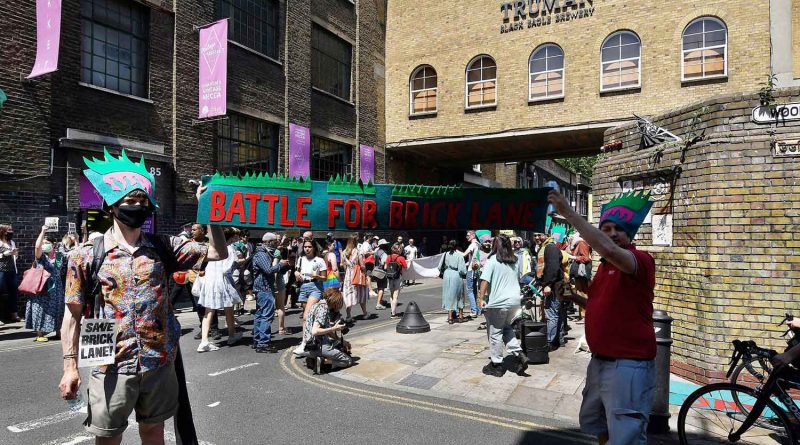Whitechapel LDN announces investigative series into the redevelopment of Brick Lane
The five-part series to be published exclusively on Whitechapel LDN online scrutinises the East End’s most controversial regeneration plan to date: the Truman Brewery in Brick Lane.
The first article in a five-part exclusive investigation into the redevelopment of Brick Lane and the controversial Truman Brewery proposal will be published on Monday 26 June on Whitechapel LDN and then in The Slice Roman Road newsletter. The following four articles will be published daily afterwards.
Over the last six months, we have been investigating how the development was permitted despite fierce opposition from the local community and who holds the power and influence to transform our society in Tower Hamlets.
We speak with the key players who are collectively determining the future of Brick Lane – the developers, local councillors, the Neighbourhood Forum and the local community – and ask whether due process is being followed, who is really benefitting from the development of the area and whether the interests of the community are being brought into consideration.
The series was written by former Whitechapel LDN Deputy Editor Cormac Kehoe as part of a collaborative investigative journalism project between Social Streets C.I.C, and the Centre for Investigative Journalism (CIJ).
Social Streets C.I.C is a not-for-profit digital media company that publishes Roman Road LDN, Bethnal Green LDN, Whitechapel LDN and Poplar LDN. The CIJ is a charity that champions investigative reporting for the public interest and brings together trainee investigative journalists, community news outlets and campaign groups.
Kehoe says: ‘Before arriving in London I was told by all and sundry that the place would be devoid of community, that life would be fast and that the people would be impersonable and unkind.
‘The southern end of Brick Lane contradicted everything I’d been told. The place showed all the signs of a thriving, tightly-knit community.
‘When I heard that the area had the highest rate of population churn in the country I wondered how this had been allowed to happen, and knew that we needed to write a story to understand and explain the forces driving the atomization of this wonderful and unique community.’

